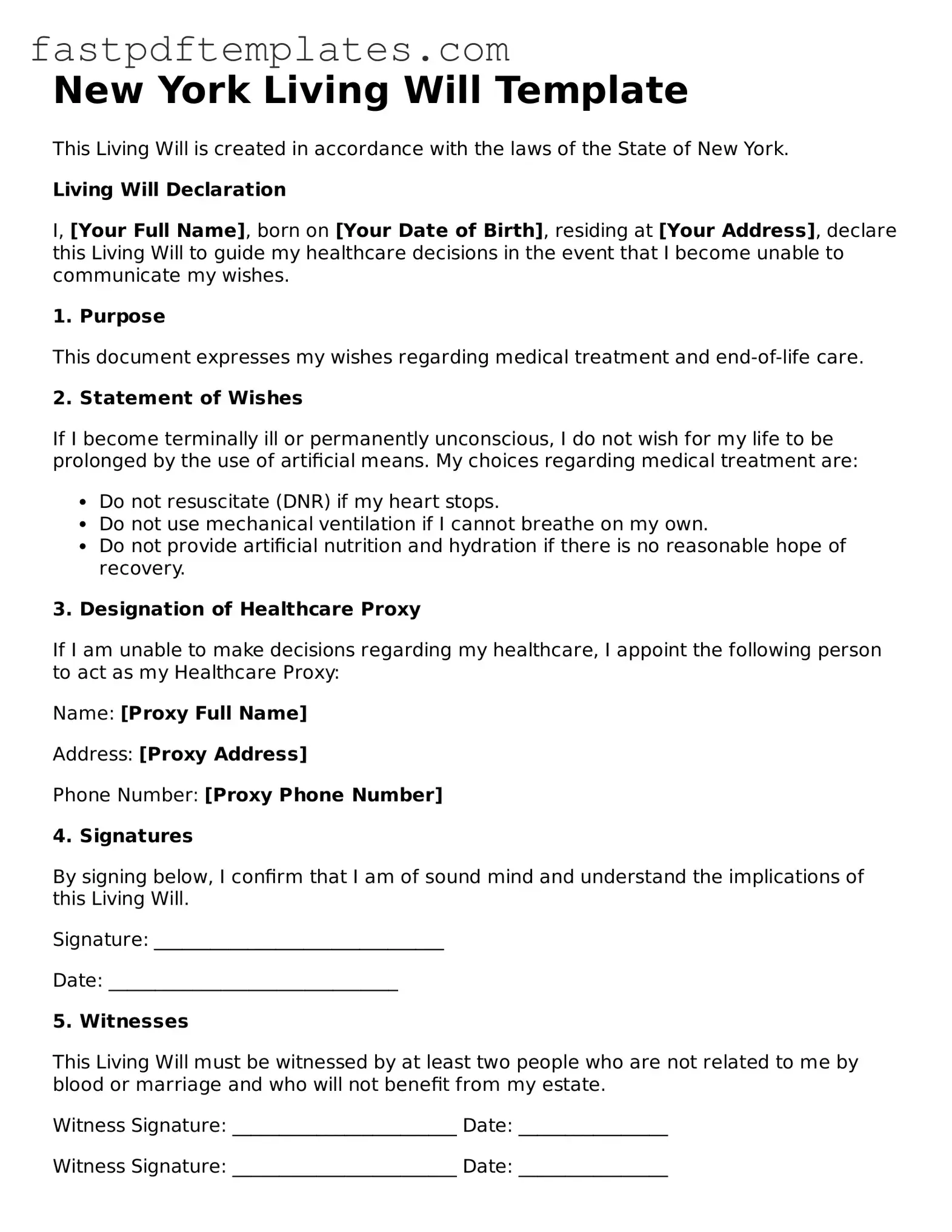New York Living Will Template
This Living Will is created in accordance with the laws of the State of New York.
Living Will Declaration
I, [Your Full Name], born on [Your Date of Birth], residing at [Your Address], declare this Living Will to guide my healthcare decisions in the event that I become unable to communicate my wishes.
1. Purpose
This document expresses my wishes regarding medical treatment and end-of-life care.
2. Statement of Wishes
If I become terminally ill or permanently unconscious, I do not wish for my life to be prolonged by the use of artificial means. My choices regarding medical treatment are:
- Do not resuscitate (DNR) if my heart stops.
- Do not use mechanical ventilation if I cannot breathe on my own.
- Do not provide artificial nutrition and hydration if there is no reasonable hope of recovery.
3. Designation of Healthcare Proxy
If I am unable to make decisions regarding my healthcare, I appoint the following person to act as my Healthcare Proxy:
Name: [Proxy Full Name]
Address: [Proxy Address]
Phone Number: [Proxy Phone Number]
4. Signatures
By signing below, I confirm that I am of sound mind and understand the implications of this Living Will.
Signature: _______________________________
Date: _______________________________
5. Witnesses
This Living Will must be witnessed by at least two people who are not related to me by blood or marriage and who will not benefit from my estate.
Witness Signature: ________________________ Date: ________________
Witness Signature: ________________________ Date: ________________
6. Revocation
This Living Will may be revoked at any time by notifying my healthcare provider or by creating a new Living Will.
Signed this ____ day of __________, 20__.
